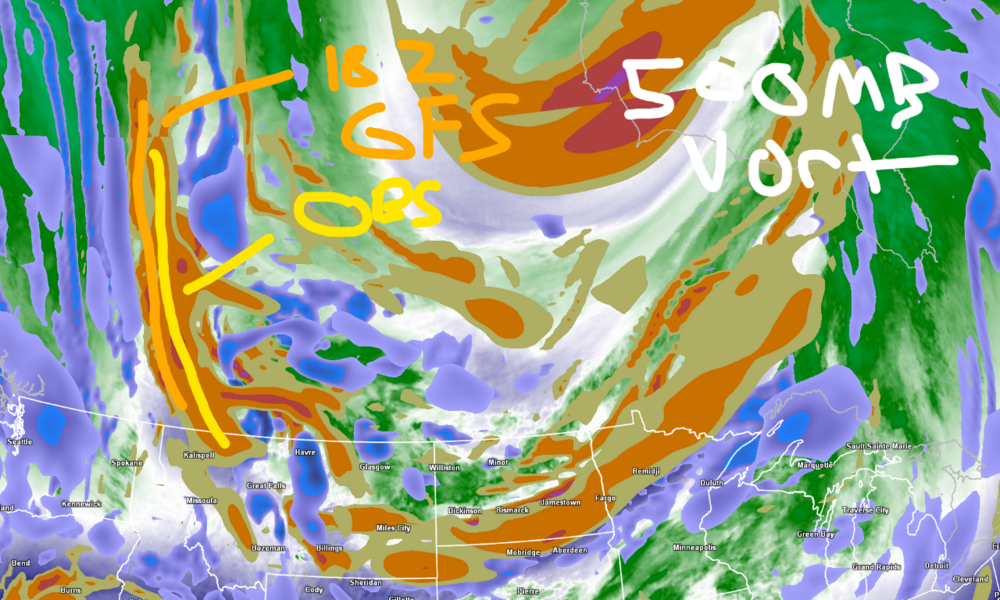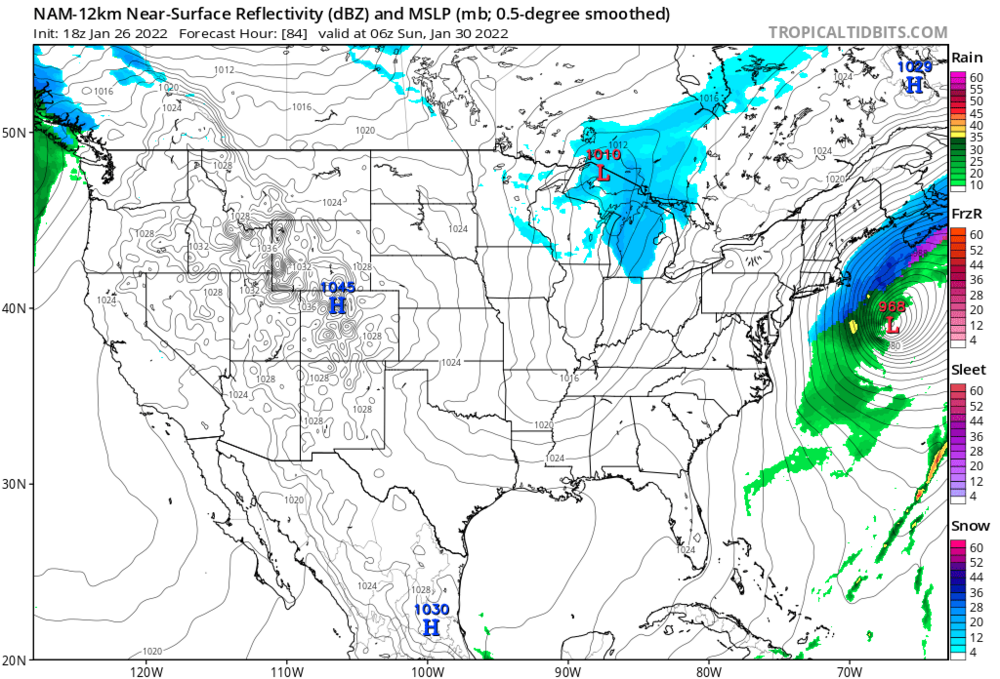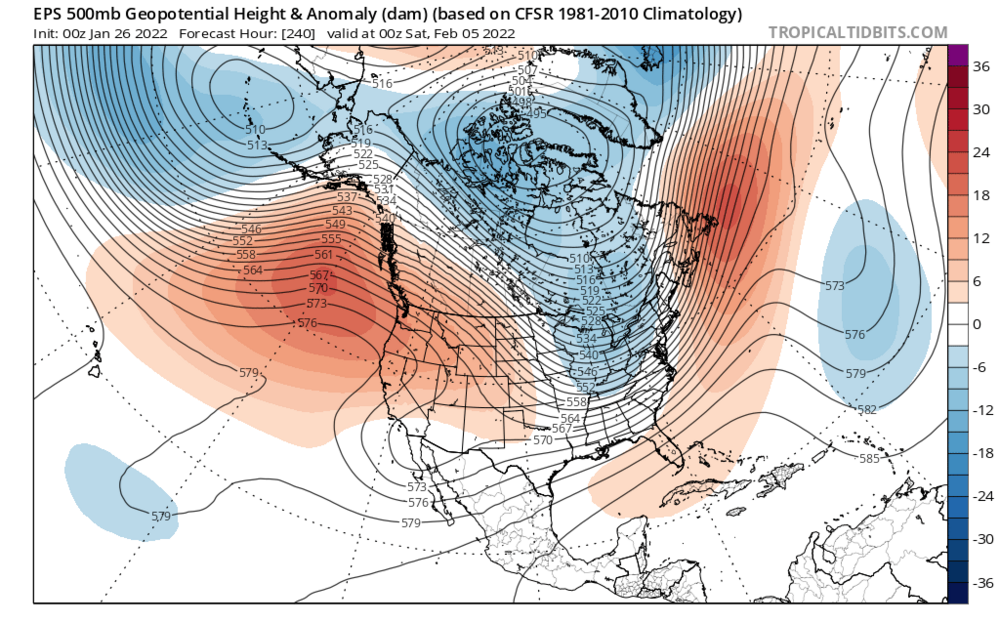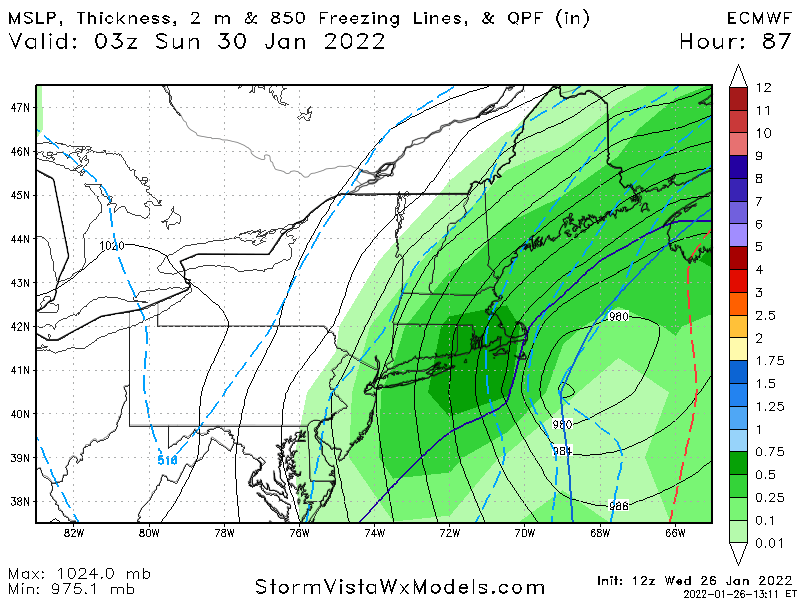-
Posts
6,802 -
Joined
-
Last visited
Content Type
Profiles
Blogs
Forums
American Weather
Media Demo
Store
Gallery
Everything posted by George001
-
Oh yeah this happens all the time especially with big ones. The Dec 2020 storm was way south and crushed DC like 3 days out, and then the low moved like 500 miles NW, NYC went from being on the NW edge to mixing with sleet after like 10 inches of snow. My area ended up with around 15, and NNE really got hammered, I remember areas in NNE were forecast like 2-4 THE DAY BEFORE the storm and got 40 inches. It’s usually not that extreme, but big changes happen even in the short range.
-
The 18z gfs is slower and more west with the energy that eventually gets buried out west. To my untrained eye (mets here, correct me if I am wrong) it looks like the energy is digging faster and is farther east. In my opinion this tells me gfs and nam are wrong with burying the energy. edit- not my map
-
Even on the more east models like the Nam the strength of the low is still deepening into the 970s and 960s. The surface outputs are complete bullshit, the precip shield would be much more expansive. The 500mb is closing off and there are 2 closed contours. That would still be a big storm even if the Nam was right. A 968 mb low with a precip shield that compact with a negatively tilted trough and closed off low? No way in hell!
-
Yeah gonna enjoy this snow while it lasts lol
-
Feb looks like it could be decent. Warm up is probably real, but it looks like it will be short lived and we will have more chances after it. There are signs that although the polar vortex is quite strong, it will be stretched towards our side of the globe. No signs of a split, but we don’t need that. There are signs that the pacific will improve again towards the end of the EPS.
-
i completely agree, I don’t get the negativity here. It trended west yesterday and back east a little today. It will likely come back west some, Bernie Rayno talked about it on his stream, called it the windshield wiper effect and said not to get too caught up in the QPF and surface shifts from run to run. The only model that truly looked bad at 500 mb was the Canadian, I’d like to see that come back west at 0z. And even that still looked good for a foot of snow, just not the crazy amounts like the other guidance.
-
Navy appears to have shifted west, at h5 it has a closed off low and 2 closed contours instead of only one. Rule of thumb is a foot of a snow for each closed contour (Bernie Rayno talked about it on his livestream, the Euro actually had 3 closed contours). Interestingly the gfs has 3 as well as it goes over the cape and 5 downeast Maine (so it’s surface output is likely bullshit verbatim). The Canadian has only one, which is why it makes sense that the snow totals are lower on that. Nam has 5 closed contours as it crosses over nantucket. Euro last night had 3.











